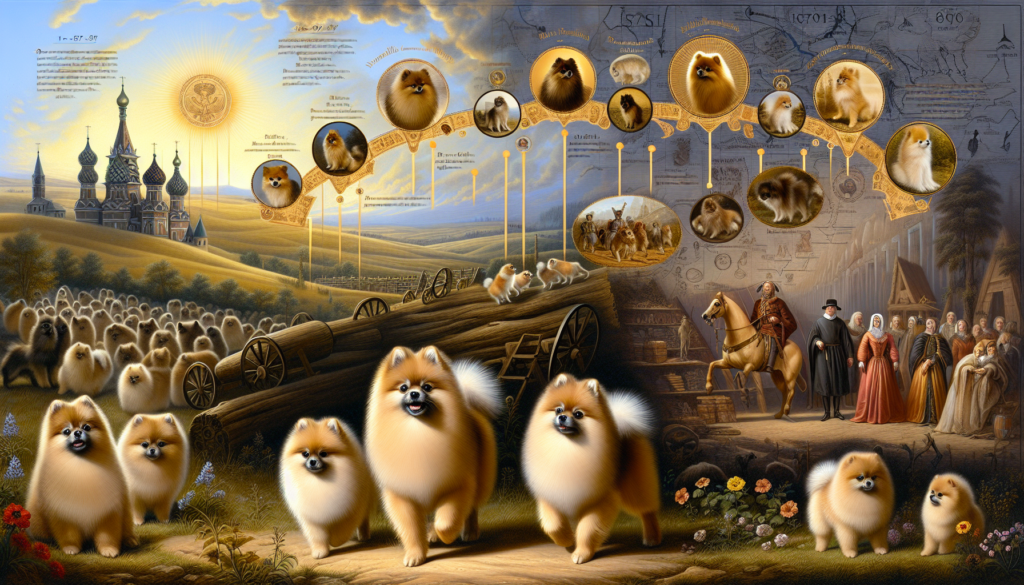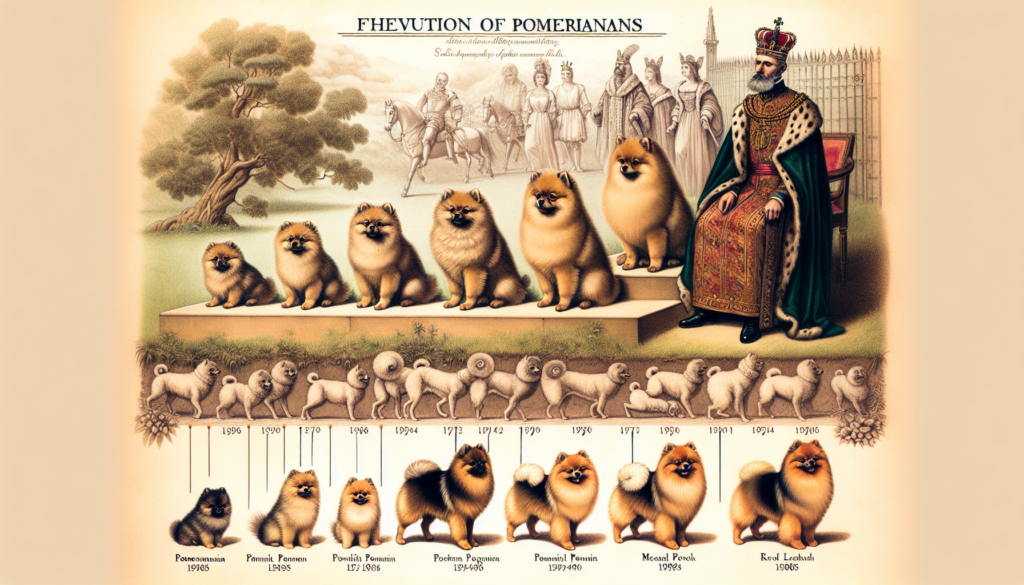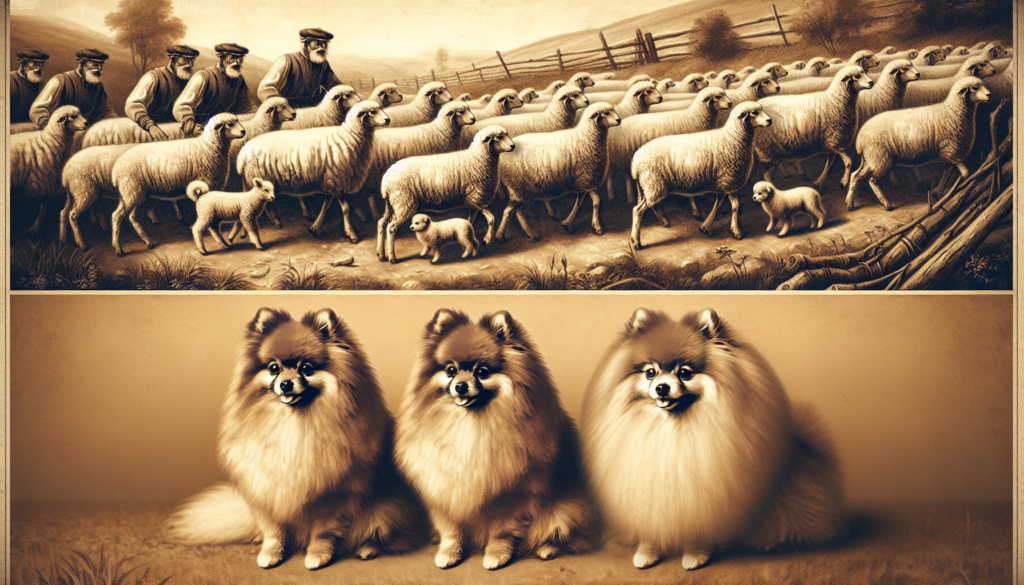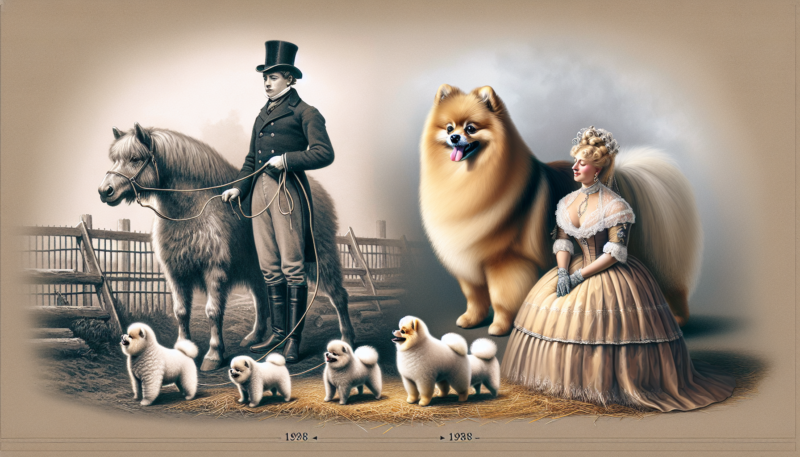Imagine a world where the adorable, fluffy Pomeranians didn’t exist. It’s difficult to fathom, isn’t it? These spunky little creatures have become a beloved addition to countless households around the world. But have you ever wondered about the origins of these pint-sized furballs? Today, we’ll take a closer look at where Pomeranians come from and uncover the fascinating history behind this delightful breed. Strap in, because it’s going to be an enlightening journey!
The Origins of Pomeranians
Pomeranians, with their fluffy coats and delightful personalities, have become a beloved breed around the world. But where did these adorable little dogs come from? Let’s trace back their origins and explore their journey throughout history.
Early Ancestors
The history of Pomeranians can be traced back to their early ancestors, known as Spitz-type dogs. These dogs were characterized by their pointed ears, curled tails, and wolf-like appearance. They were bred by ancient nomadic people and were utilized for various purposes such as hunting, herding, and pulling sleds. The Spitz-type dogs were highly adaptable to different climates and were commonly found in Northern European regions.
German Connection
The name “Pomeranian” is derived from the region of Pomerania, which is located in present-day Germany and Poland. It was in this region that the Pomeranian type began to develop. The local breeders in Pomerania selectively bred the Spitz-type dogs to achieve a smaller size and a more refined appearance. These efforts resulted in the creation of the Pomeranian breed as we know it today.
The breeders in Pomerania aimed to produce dogs with desirable traits, such as a dense double coat, a fox-like face, and a lively personality. Over time, they successfully developed a distinct Pomeranian type that captured the hearts of many dog enthusiasts.
Pom’s Royal Influence
Pomeranians first gained significant attention when Queen Victoria of England fell in love with the breed during the 19th century. Queen Victoria owned a small Pomeranian named Marco, who ignited her passion for the breed. She eventually acquired more Pomeranians, and her love for them popularized the breed among the nobility of the time.
During Queen Victoria’s reign, Pomeranians became fashionable accessories among the upper class. These elegant little creatures were often seen accompanying their owners to social events, symbolizing wealth and high social status. Their popularity soared, and soon Pomeranians were highly sought after all over England.
Pomeranians in England
Pomeranians made their way to England through trade routes and importation from Pomerania. The first Pomeranians to arrive in England were larger than the breed we know today, commonly weighing around 30 pounds. However, selective breeding in England gradually reduced their size to the small, compact dogs we recognize today.
The establishment of breed clubs in England played a crucial role in refining the Pomeranian breed. These clubs aimed to standardize the breed’s appearance and temperament, solidifying the Pomeranian as a distinct and recognizable breed. Breed standards were established to guide breeders in producing Pomeranians that met specific criteria.
Breeding for Size
As the popularity of Pomeranians grew, breeders in England began to focus on reducing the size of the breed. Selective breeding was employed to produce smaller and more refined Pomeranians. This breeding for size not only resulted in a miniature version of the breed but also gave rise to the emergence of Toy Pomeranians.
The Toy Pomeranians, often weighing around just 4 to 6 pounds, became particularly popular among those seeking an even tinier companion. Their petite size and adorable features made them irresistible to dog lovers worldwide. Today, Toy Pomeranians are cherished as one of the most sought-after variations of the breed.

Exhibition Dogs
The rise of dog shows and competitions provided a platform for Pomeranians to showcase their charm and beauty. The first Pomeranian Championships, held in England, propelled the breed into the limelight. These showcases allowed breeders to demonstrate the results of their years of selective breeding and advanced the breed’s popularity even further.
Dog shows increased public interest in Pomeranians, and demand for well-bred specimens soared. The shows became a spectacle for both dog enthusiasts and the general public, establishing Pomeranians as a highly desired breed among pet owners.
The American Influence
The influence of Pomeranians also spread across the Atlantic to the United States. In 1898, the American Kennel Club officially recognized the Pomeranian as a breed, further cementing its status as a popular companion dog. Pomeranian Breed Clubs were established in the US, focusing on promoting the breed and organizing events that celebrated these delightful dogs.
American breeders played a crucial role in improving the breed’s standards. They introduced new bloodlines from Europe and implemented successful breeding programs to further enhance the Pomeranian breed in America. These efforts contributed to the breed’s development and ensured the preservation of its unique characteristics.

Rebounding Popularity
Like many dog breeds, Pomeranians experienced a decline in popularity following World War II. The breed faced challenges as resources became scarce and people’s priorities shifted. However, their charm and appeal never waned entirely.
Fortunately, Pomeranians enjoyed a revival of interest in the 1970s as their resilient qualities and delightful personalities reemerged. This sparked a renewed passion for the breed, and their popularity steadily climbed back up. Pomeranian enthusiasts dedicated themselves to preserving the breed’s heritage and ensuring its bright future.
Pomeranians Today
In modern times, Pomeranians have achieved immense popularity and are adored by dog lovers worldwide. Their striking appearance, animated personality, and intelligence make them a beloved choice for many families.
Pomeranians can be found in households all over the world, with their charm transcending borders and cultures. They continue to steal hearts with their fluffy coats, small yet sturdy frames, and spirited nature. Whether in bustling cities or quiet suburban neighborhoods, Pomeranians bring joy and companionship to those fortunate enough to share their lives with them.
Pomeranians also shine in dog shows and competitions, where they demonstrate their agility, obedience, and show-stopping presence. These shows not only highlight the breed’s beauty but also celebrate the dedication of breeders who strive to uphold the breed standards and improve its qualities.
As beloved companion pets, Pomeranians provide unwavering loyalty and endless affection. They are ideal for families of all sizes and ages, bringing happiness and laughter to every household. Pomeranians have firmly established themselves as a beloved breed, admired for their unique charm and undeniable charisma.
In conclusion, the journey of Pomeranians from their early Spitz-type ancestors to the modern breed we know today has been one of evolution, cultural influence, and unwavering popularity. Their roots in Germany, royal influence, and breeding for size have shaped them into the lovable companions they are today. Pomeranians have captured the hearts of many with their striking appearance, delightful personalities, and enduring popularity in the dog world.

